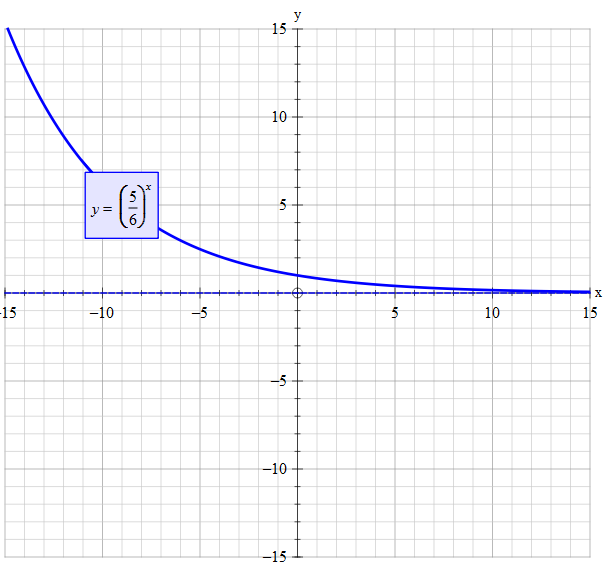How do you tell whether #f(x)=(6/5)^-x# is an exponential growth or decay?
2 Answers
Given the form
If
If
Explanation:
To understand why this makes sense, let's expand the function that is given. To do this, we need to keep in mind two properties of exponents:
First,
Second,
Using the first property, expand the equation given in the problem:
Now, use the second property to flip the fraction and drop the negative sign from the exponent:
Now that we've gotten this far, let's consider what will happen to the value of
Graph of
graph{5^x [-5, 5, -1.47, 5]}
Graph of
graph{6^x[-5, 5, -1.47, 5]}
Looking at the difference between these two graphs,
If
Decay
Explanation:
Given:
Set as:
The index (power) being negative is another way of writing:
This is the same as:
As
Thus the whole will become less and less as
Thus we have
And
Thus it is decay



